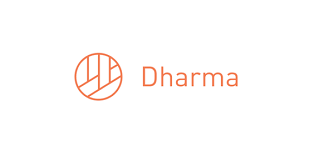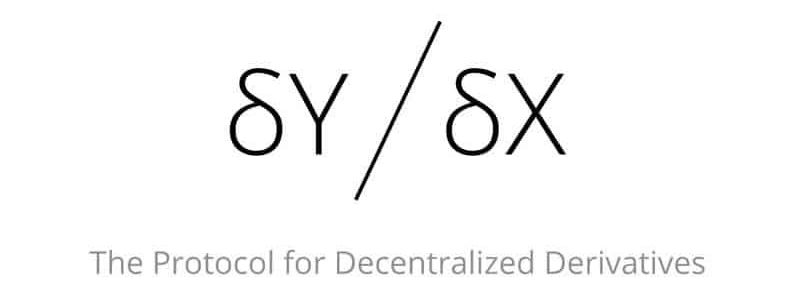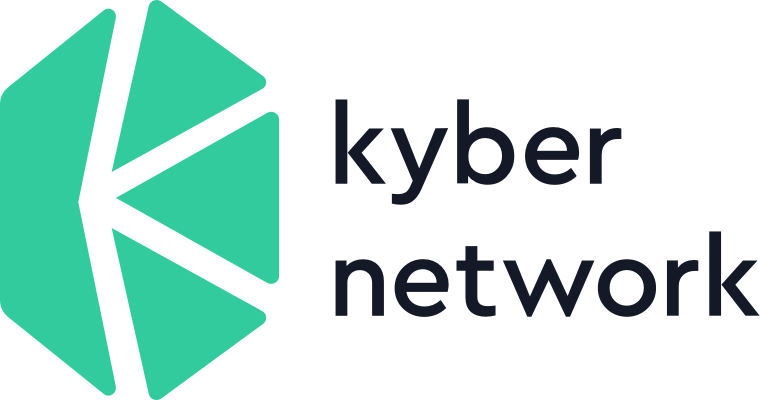Decentralised finance, also known as defi, is a new sector of finance, working in parallel to the conventional financial systems. Although nascent – it already provides a wide range of services including asset exchanges, lending, borrowing, interest accounts, securities, prediction markets and plethora of stable-coins.
That might have all been word soup to you – if it was, this article is here to introduce you to DeFi, break things down for you, starting with what technology is used to facilitate it, introduce you to concepts and organizations in the space, then explain why its going to be the biggest thing since sliced bread.
Defi Blockchains:
Currently, the Ethereum blockchain is the main chain being used within the defi space. Other popular options are EOS and PlasmaDLT. It is the protocols and standards of these blockchains that provide many defi projects a platform to function and even start to flourish.
Ethereum
The longest running and best established chain, because of this Ethereum is currently the basis for all of the popular defi solutions. Ethereum has a wide range of defi solutions, Idex, dYdX, 0x, chainlink. Ethereum, like bitcoin has found its “killer app” and it, like bitcoin, is certainly going to be around for many years to come.
EOS
EOS has had record-breaking financial backing at launch, is considered “un-hackable” due to its architecture by some. Yet EOS still does not have much in the way of defi dapps or side-chains. The only defi products on EOS currently are decentralised exchanges and they are not ones you would want to use, due to low liquidity.
PlasmaDLT
A very promising smart contract technology. It is much more feature rich then the base layer of Ethereum. It employs the LpPoS protocol to secure the network, what this means is that users with the largest deposits on the network are automatically elected as block producer. It is possible to usurp a block producer and take their place just by having a large enough balance on the network.
What is DeFi and Open Finance?
There are two main flavors of decentralised finance, lending protocols and hybrid services.
Lending protocols are open, decentralised, autonomous finance services powered by blockchain and their users.
Whereas hybrid services are an ecosystem of digital assets and lending protocols, integrated with conventional financial services and structures.
Hybrid Defi Service Providers:
BlockFi
Blockfi is classed as a hybrid service, offering interest accounts and loans backed by crypto collateral. Hybrid means that the service is ‘somewhat’ centralised, this has its benefits over completely decentralised solutions. The main one being that their custody services are insured as well as secure so if your money does get hacked you have a good chance of having it. Also the user experience is much simpler, you don’t need to generate and write-down or store a seed phrase, nor do you need to worry if someone has access to your hardware wallet, indeed in many situations these custody solutions are safer than hardware wallets.
Celsius Network
Celcius network – created by the man behind VoIP (calls over the internet e.g. Skype), Alex Mashinsky. Celsius, like blockfi, offers both interest accounts, and loans backed by crypto collateral as well as an instant crypto remittance app called CelPay allowing users to send crypto instantly to contacts.
Lending Protocols:
Lending protocols on the other hand are completely decentralised, with nothing other than public blockchains enforcing and providing financial services. These have several benefits when compared to conventional finance including:
- Completely disconnected from traditional finance
- Integration with digital asset lending/borrowing
- Collateralization of digital assets
- Instant transaction settlement and novel secured lending methods
- No credit checks, meaning broader access to people that cannot tap into traditional services
- Standardization and interoperability — can also reduce costs with automation
These properties of open lending protocols have made there growth explosive. Active outstanding loans from four open lending protocols — Maker DAO, Dharma, dYdX, and Compound Finance — rose 1,200 percent in 2018 to reach $72 million & is currently at almost $150 million.
It is possible for anyone to track everything that happens on the lending protocols using loanscan.io, essentially the coinmarketcap.com of lending protocols.
Maker DAO

Maker DAO is the reason for the spotlight being upon the defi space. Its a protocol that relies on game theory and market pressure to keep its stable coin stable and its financial products safe.
Here is a quick run down of how Maker DAO works.
The contract that is used when getting a loan from maker is a CDP or collateralised debt position. Using these CDPs you lock up ETH as collateral against a loan of the stablecoin DAI. The amount you can loan is relative to the collateral in the CDP. As well as the DAI stable coin there is also the Maker governance token or MKR, it pays out fees to holders, but also acts as a lender of last resort for the Maker DAO system, in a catastrophic event i.e. sudden collapse of ETH price. In such an event MKR will be created and sold on the open market to raise additional collateral.
Compound Finance

Compound is a transparent, autonomous liquidity pool, the first of its kind— allowing users & applications to frictionlessly earn interest or borrow Ethereum assets without relying on a counterparty. Instead of lending assets directly to another user you supply liquidity to a market. Interest rates are determined algorithmically, when liquidity is plentiful, interest rates are low as liquidity becomes scarce, interest rates increase, incentivizing new supply and repayment of borrowing. Interest accrues every Ethereum block, with no pre-determined duration or terms. This means you can use the protocol for as long as you would like.
Dharma

Dharma is a transparent, decentralised debt market. In other words its a blockchain that facilitates the recording of debtors and creditors on a trustless ledger, removing the need for the middlemen that define traditional finance.
They also offer what they call a ‘smart wallet’ (github) no seed phrase or paper backups – it just works. This project is a front runner when it comes to user experience, not only do they offer easy to use accounts, but they are also integrated with Coinbase.
dY/dX

dYdX is more complex than compound or dharma, it allows you to margin trade crypto as well as lend to earn interest or borrow. Currently it only supports barely a handful of asset pairs.
Kyber Network

Kyber is an on-chain liquidity protocol with the aim of providing instant and complex transactions. An example use would be for a vendor to use kyber to accept payments in any crypto and receive their payment in the token they wish. This allows dapps to accept all tokens as payment, not just their native tokens. This has huge benefits for the ecosystem, it could settle the tribalism in the space and grease the wheels of adoption.
Decentralised Digital Asset Exchanges:
If you have been around the crypto space a while you will of course be aware of decentralised exchanges but how often do you use one? There are quite a few benefits of trading on a decentralised digital asset exchange. They operate without relying on a counterparty, there is no central matching engine but a distributed network of nodes so downtime is much less likely. Also true DEXs are non-custodial meaning you can trade straight from your wallets.
Bancor network

The Bancor network is an exchange that features every cryptocurrency, whats known as blockchain agnostic. They currently feature every token pair imaginable, liquidity is currently low, but it will increase as people realize the hypocrisy of using centralised exchanges. Also the interface of this exchange is very much Coinbase-esque. If you haven’t used bancor, you must, its a breeze to get stared and trade. Check it out here.
Waves DEX
Waves is the highest volume DEX operating at this time, and is focused on ease of use and on-boarding of new tokens. Having said that, currently the choice of pairs is low and so is the volume. Waves are seeking to be a more of a crowdfunding exchange for launching projects, where the funding method is tokens created using the waves chain.
IDEX

IDEX is a relatively well-established Ethereum-based decentralised digital asset marketplace with a more standard approach when compared to waves. The Interface is not as user-friendly however the selection of pairs is plentiful for a DEX.
Prediction Markets:
An interesting and overlooked sector of decentralised finance. You may ask how a prediction market is defi? its because because the data generated by the market can be accessed as an oracle service by other platforms and services, or even by users.
Augur
Augur allows anyone to create a market around the outcome of any real-world event. Users trade on an event’s outcome by buying and selling shares in the event’s market. These markets, the users positions, and the events outcomes are recorded to the Augur chain.
The Effects Defi Upon Existing Financial Infrastructure
The services listed and more already pose a risk to the financial establishment. They will prove to be a powerful combination of technologies and have started building a financial world outside the control of elites, outside the control of anyone, yet at the same time controlled by everyone via the emergent behavior of the participants.
For a directory of defi services check out defiprime.com

At last, I found an article which I am looking for quite a long time.
I hope it will help me .
Best regards,
Bailey Duke
Thank you so much for doing the job that is remarkable here, everyone will certainly like your post.
King regards,
Balle Cannon
Like!! Thank you for publishing this awesome article.
I was recommended this blog by means of my cousin.
You are wonderful! Thank you!
Cheers Albert, really appreciate the encouragement.
I am not sure where you are getting your info, but good topic.
I needs to spend some time learning more or understanding more.
Thanks for wonderful info I was looking for this information for my
mission.
It’s truly very complex in this active life to listen news on TV, therefore I simply use web for
that reason, and obtain the latest news.